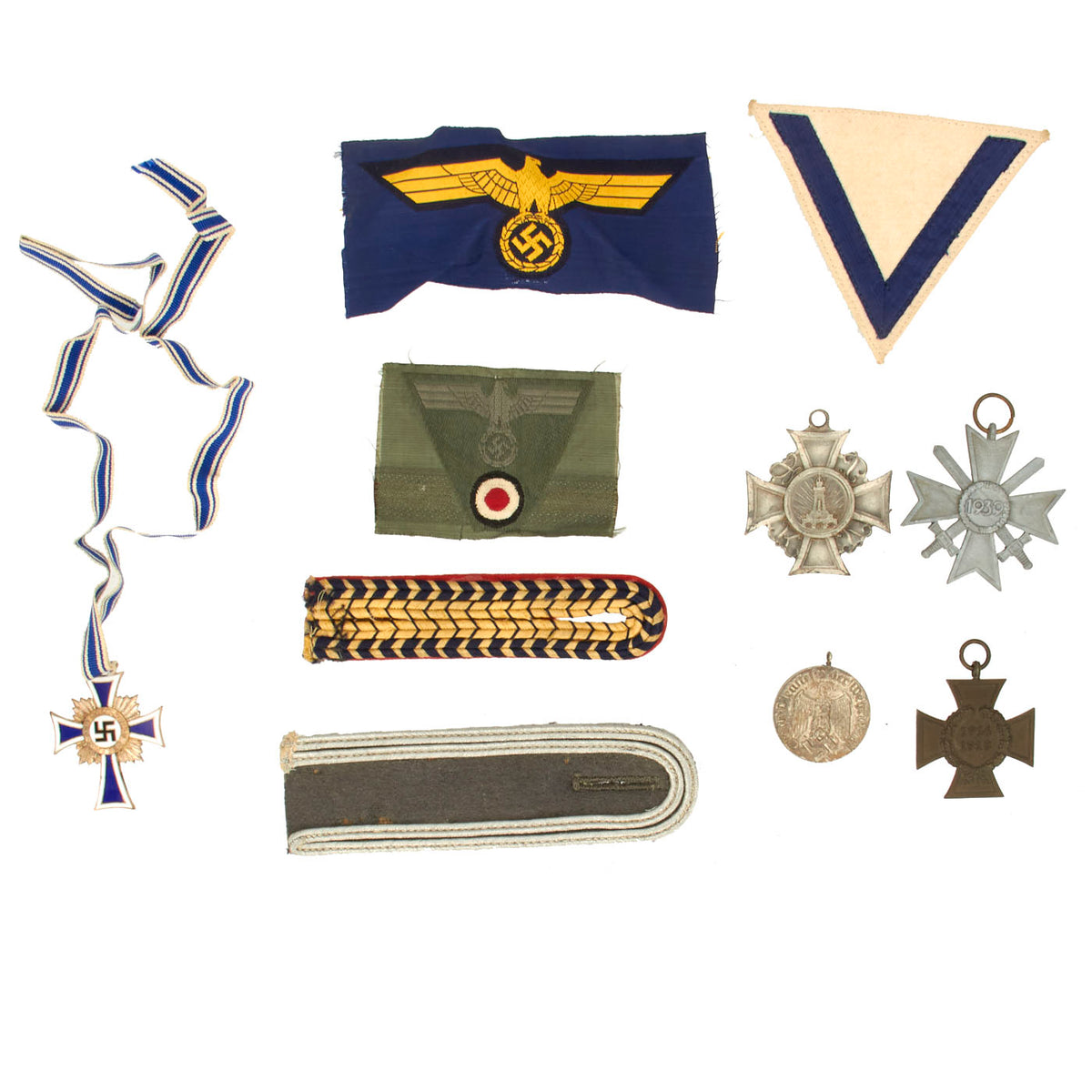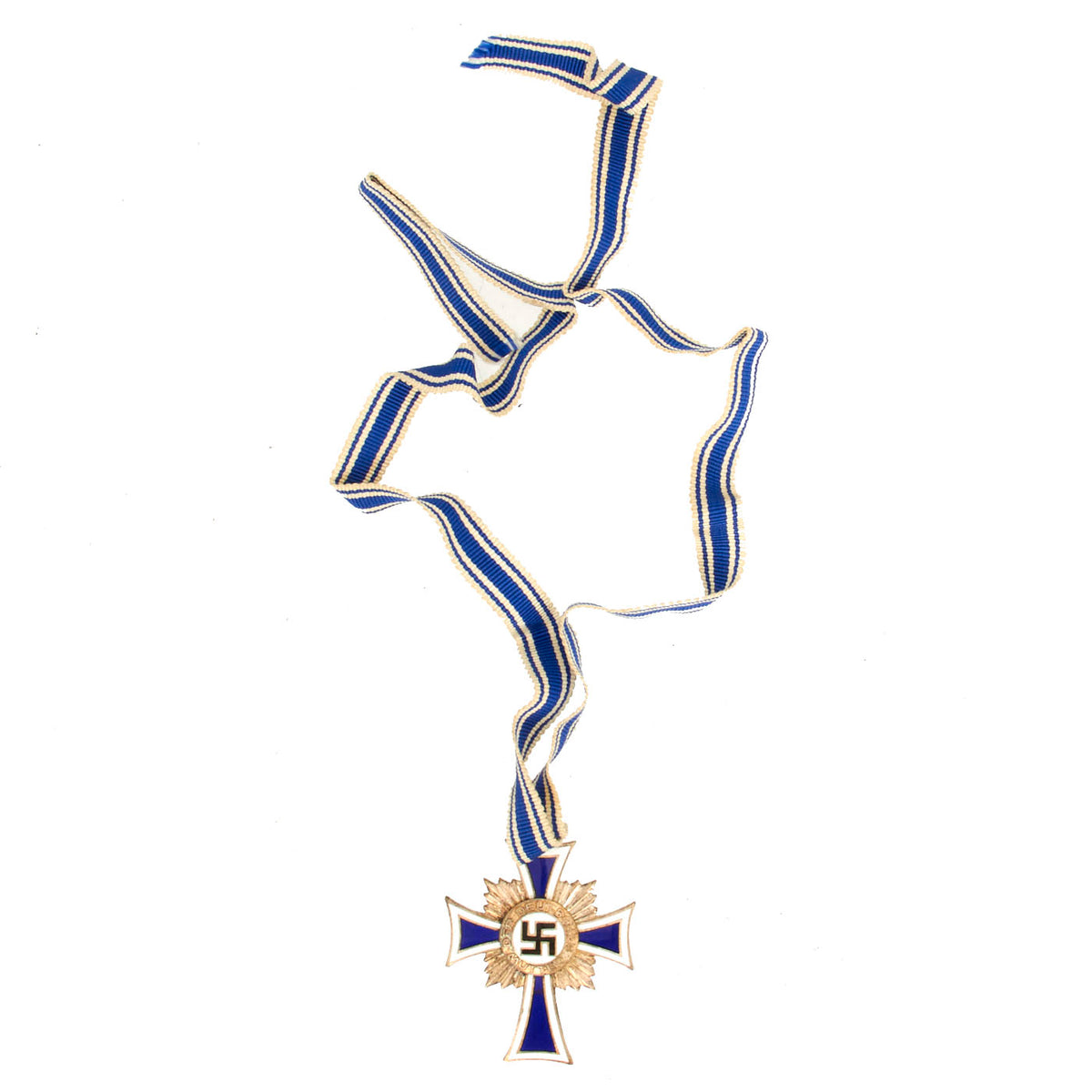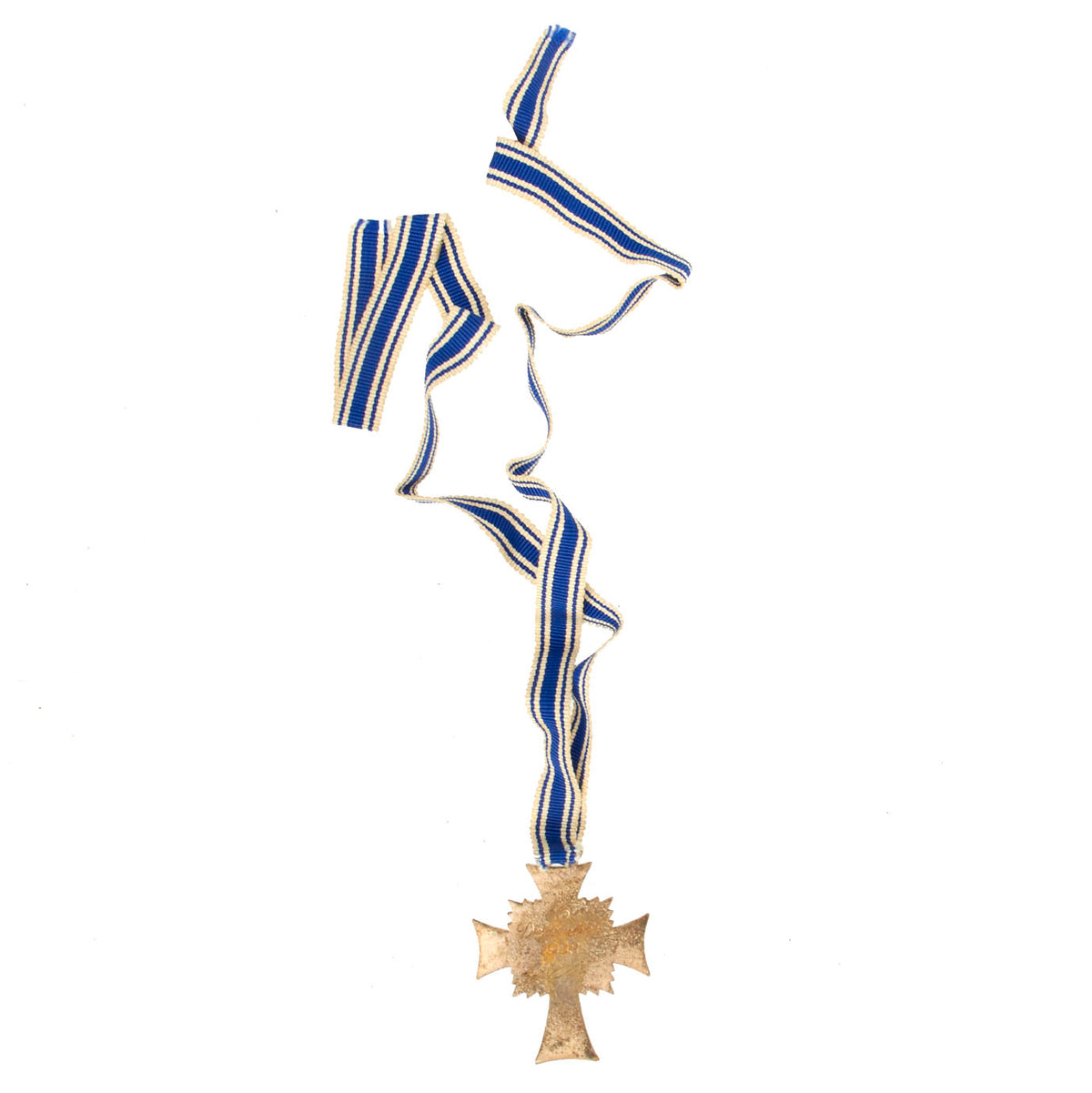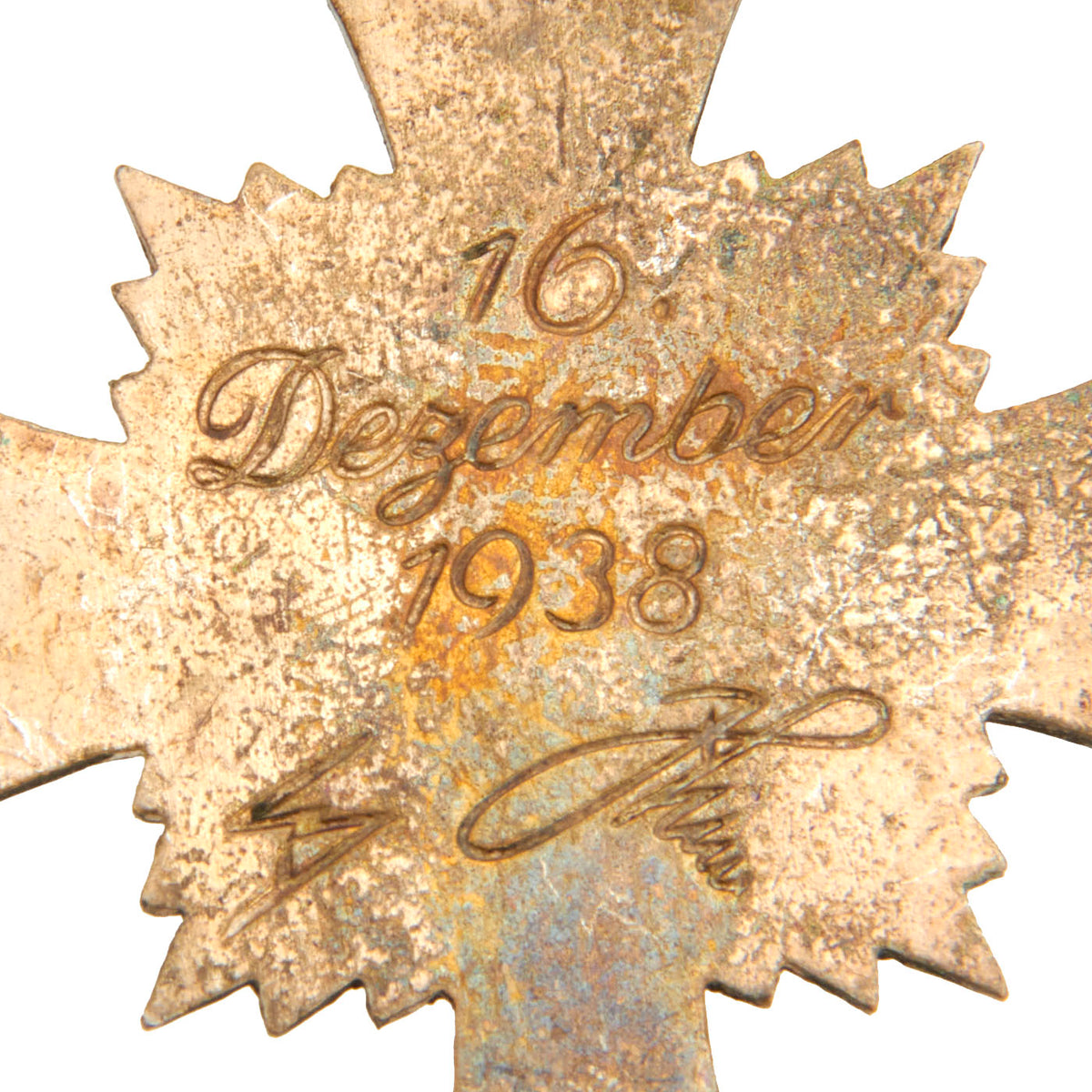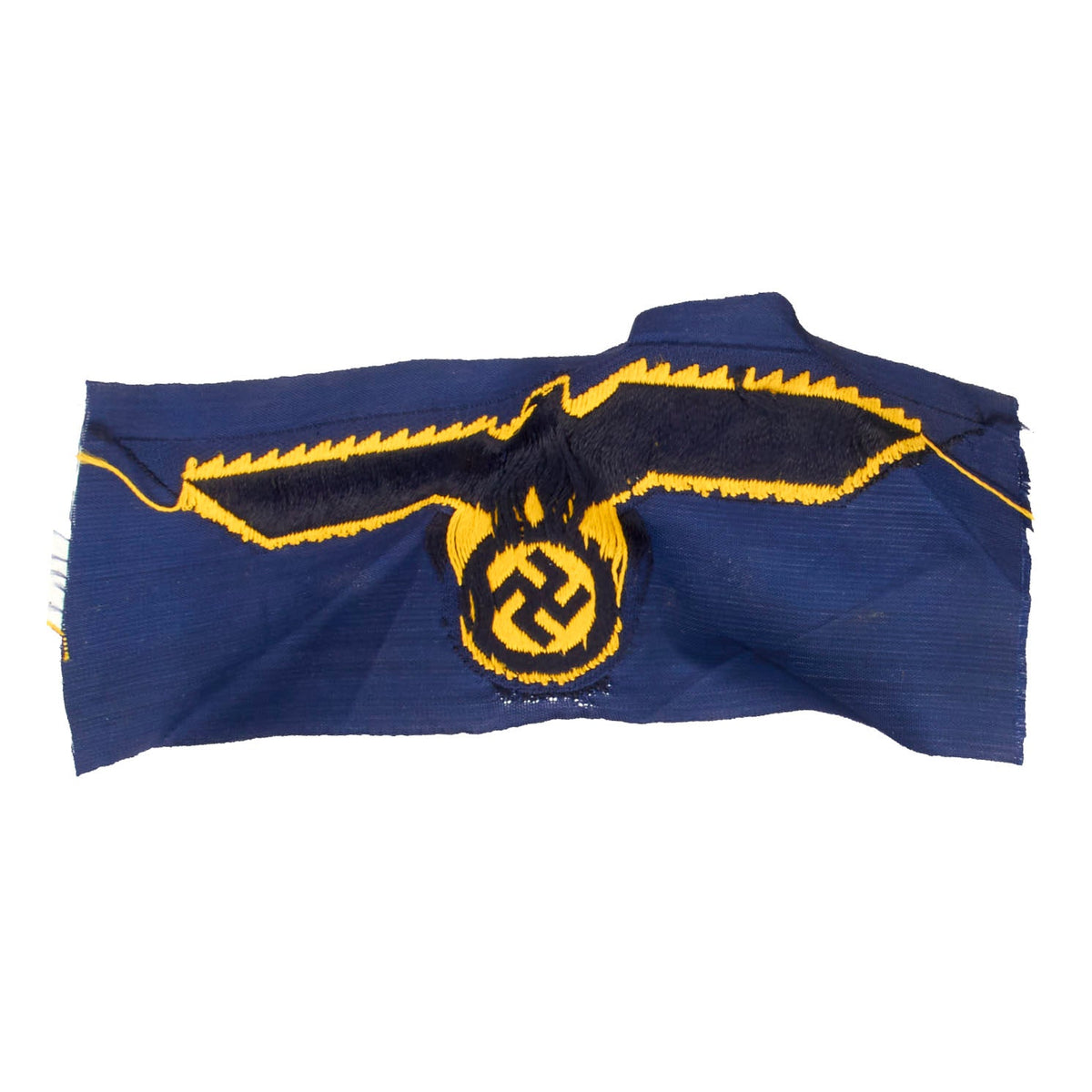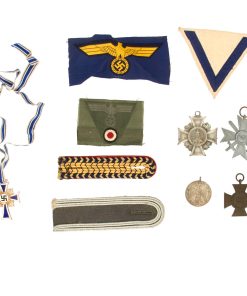Original German WWI & WWII Medal and Insignia Grouping with Hindenberg Cross, KvKII & More – 10 items Original Items
$ 275,00 $ 110,00
Original Items: Only One Set Available. This is a very nice collection of German WWII Insignia & Awards, which was brought back from the European theater by a USGI after the war was concluded. It includes some a wide variety of medals and insignia, including a Hindenberg Cross, a War Merit Cross 2nd Class, and more!
This lovely set includes:
– One Pre-WWII German WWI Honor Cross of the World War 1914/1918 (Hindenburg Cross) Medal without ribbon. It is maker marked G W L on the back.
– One German WWII War Merit Crosses 2nd Class with Swords (For Combat). It does not have the correct ribbon, and the gold wash is completely missing, so it now is bare zinc alloy.
– One German WWII Wehrmacht Heer 4th Class Long Service Award – 4 Years without Ribbon
– One German WWII Cross of Honor of the German Mother in Silver (2nd class), in good condition with ribbon.
– One Imperial German Schulterstück Shoulder Board. We unfortunately are not able to identify it, but it looks like an officer’s shoulder board.
– One German WWII Army Heer Schulterstück Shoulder Board. We unfortunately are not able to identify it, but it looks like an officer’s shoulder board.
– One German WWII Kriegsmarine Navy BeVO Wehrmachtadler Breast Eagle Patch in unissued condition. Correct dark navy blue backing with gold thread. BeVO Machine Embroidered.
– One German WWII Heer Army Wehrmacht BeVO Wehrmacht Adler Trapezoid Eagle and Cockade Patch in unissued condition. Correct gray thread with a green background.
– One German WWII Kriegsmarine Navy Mannschaften (Enlisted Man) Single Blue on White Chevron badge. (Seaman 2nd class). For white sailor uniform.
– One Imperial German Cross of Honor 2nd Class of the Prussian State Veteran’s Association (Ehrenkreuz 2.Klasse des Preußischen Landes-Kriegerverbandes) without ribbon.
A wonderful totally genuine grouping perfect for the German Medal and Insignia collector.
Hindenburg Cross with Crossed Swords (for combat):
The Honor Cross of the World War 1914/1918 (German: Das Ehrenkreuz des Weltkriegs 1914/1918), commonly, but incorrectly, known as the Hindenburg Cross was established by Field Marshal Paul von Hindenburg, President of the German Republic, by an order dated 13 July 1934, to commemorate the distinguished deeds of the German people during the First World War. This was Germany’s first official service medal for soldiers of Imperial Germany who had taken part in the war, and where they had since died it was also awarded to their surviving next-of-kin. Shortly after its issuance, the government of NSDAP Germany declared the award as the only official service decoration of the First World War and further forbid the continued wearing of German Free Corps awards on any military or paramilitary uniform of a state or NSDAP Party organization.
War Merit Cross 2nd Class (Kriegsverdienstkreuz) with Swords (for Combat)
This was a decoration of NSDAP Germany during the Second World War, which could be awarded to military personnel and civilians alike. By the end of the war it was issued in four degrees, and had a related civil decoration. It was created by Adolf AH in October 1939 as a successor to the non-combatant Iron Cross which was used in earlier wars. The award was graded the same as the Iron Cross: War Merit Cross Second Class, War Merit Cross First Class, and Knights Cross of the War Merit Cross. The award had two variants: with swords given to soldiers for exceptional service “not in direct connection with combat”, and without swords for meritorious service to civilians in “furtherance of the war effort”. As with the Iron Cross, Recipients had to have the lower grade of the award before getting the next level.
Wehrmacht Long Service Awards – 18, 12, and 4 Years:
This award was a military service decoration of NSDAP Germany issued for satisfactory completion of a number of years in military service. The award itself is cumulative, so after the 3rd class, both a cross and a medal were worn, and the color indicated service.
On 16 March, 1936, Adolf AH ordered the institution of service awards for the first four classes, each reflecting the completion of a select number of years of military service.
Each branch of the Wehrmacht (army, navy, and air force) maintained their own version of the Long Service Award and the decoration was issued for four years (silver medal – fourth class), 12 years (gold medal – third class), 18 years (silver cross – second class), 25 years (gold cross – first class), and 40 years (1939 special class). The 40 years special class service award was introduced on 10 March 1939.
Professor Dr Richard Klein designed the awards. Recipients of lower year awards would wear the decoration simultaneously with higher level decorations. The manner they could be worn was:
3rd Class with 4th Class (gold medal with silver medal)
2nd Class with 4th Class (silver cross with silver medal)
1st Class with 3rd Class (gold cross with gold medal)
The Long Service Award was retroactive throughout a service member’s career, encompassing Reichswehr service as well as service dating during and before World War I. As such, there were a handful of 40 year awards presented, even though the NSDAP era only lasted 12 years (1933-1945).
Fast Shipping with Professional Packaging
Thanks to our longstanding association with UPS FedEx DHL, and other major international carriers, we are able to provide a range of shipping options. Our warehouse staff is expertly trained and will wrap your products according to our exact and precise specifications. Prior to shipping, your goods will be thoroughly examined and securely secured. We ship to thousands clients each day across multiple countries. This shows how we're dedicated to be the largest retailer on the internet. Warehouses and distribution centres can be located throughout Europe as well as the USA.
Note: Orders with more than one item will be assigned a processing date depending on the item.
Before shipping before shipping, we'll conduct a thorough inspection of the items you have ordered. Today, the majority of orders will be delivered within 48 hours. The delivery time will be between 3-7 days.
Returns
The stock is dynamic and we cannot completely manage it because multiple stakeholders are involved, including our factory and warehouse. So the actual stock may alter at any time. It's possible that you may not receive your order once the order has been made.
Our policy is valid for a period of 30 days. If you don't receive the product within 30 days, we are not able to issue a refund or an exchange.
You can only return an item if it is unused and in the same state as the day you received it. You must have the item in its original packaging.
Related products
Uncategorized
Uncategorized
Uncategorized
Uncategorized
Uncategorized
Uncategorized
Band of Brothers ORIGINAL GERMAN WWII Le. F.H. 18 10.5cm ARTILLERY PIECE Original Items
Uncategorized
Armored Burgonet Helmet & Polearm from Scottish Castle Leith Hall Circa 1700 Original Items
Uncategorized
Uncategorized
Uncategorized
Uncategorized
Uncategorized
Uncategorized
Uncategorized
Australian WWII Owen MK1 Machine Carbine SMG Custom Fabricated Replica with Sling Original Items
Uncategorized
Uncategorized
Uncategorized
Uncategorized
Uncategorized
Armoured Fighting Vehicles of the World: AFVs of World War One (Hardcover Book) New Made Items
